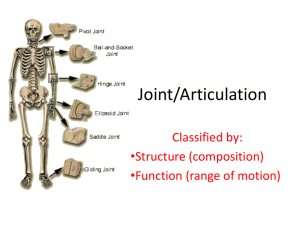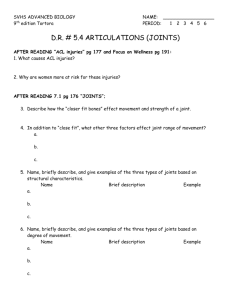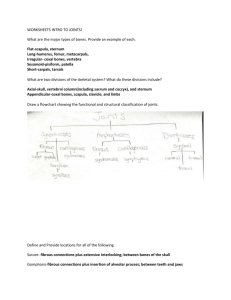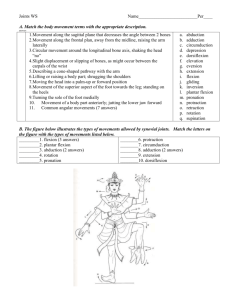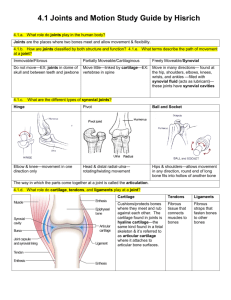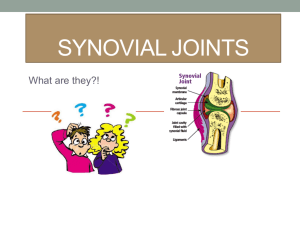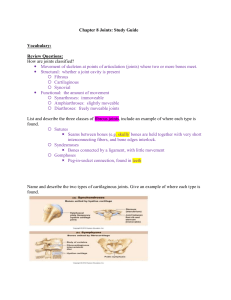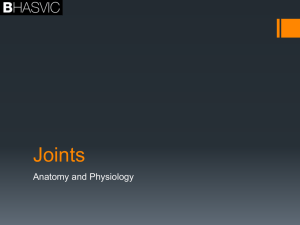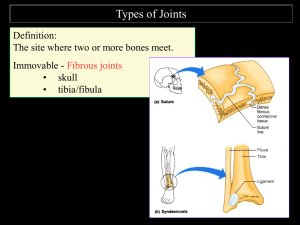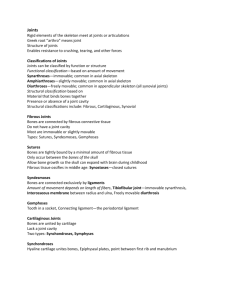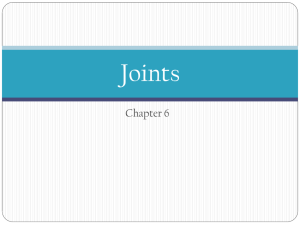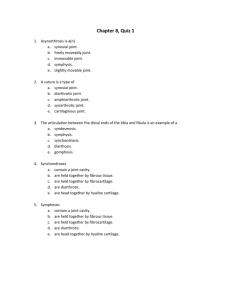Types of joints
advertisement
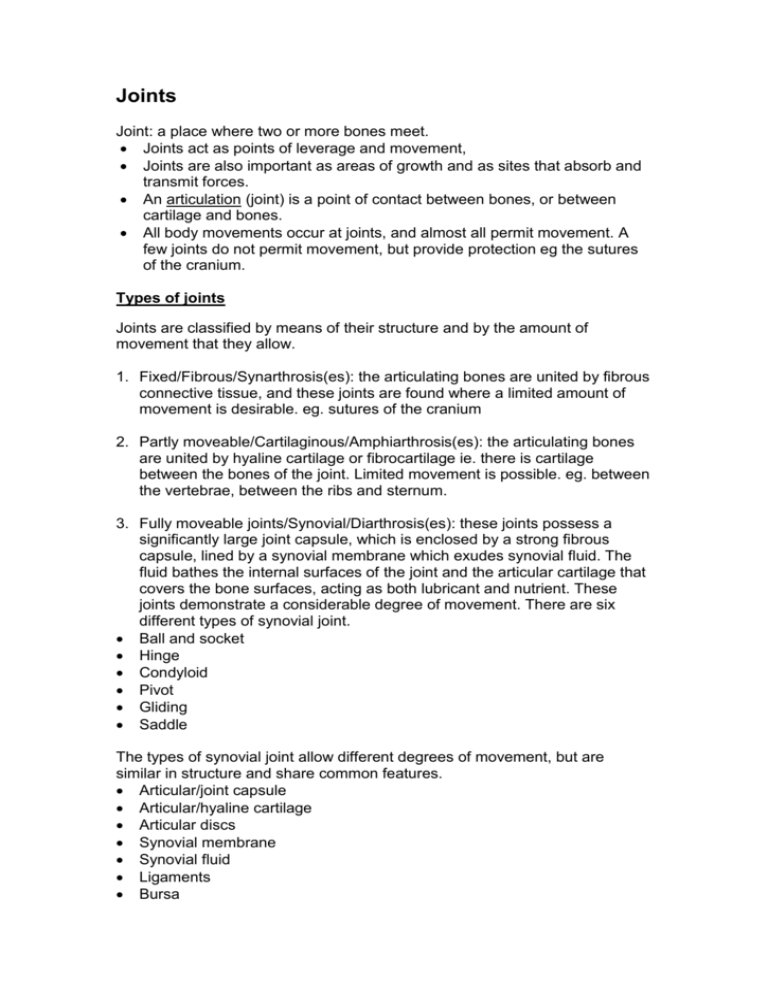
Joints Joint: a place where two or more bones meet. Joints act as points of leverage and movement, Joints are also important as areas of growth and as sites that absorb and transmit forces. An articulation (joint) is a point of contact between bones, or between cartilage and bones. All body movements occur at joints, and almost all permit movement. A few joints do not permit movement, but provide protection eg the sutures of the cranium. Types of joints Joints are classified by means of their structure and by the amount of movement that they allow. 1. Fixed/Fibrous/Synarthrosis(es): the articulating bones are united by fibrous connective tissue, and these joints are found where a limited amount of movement is desirable. eg. sutures of the cranium 2. Partly moveable/Cartilaginous/Amphiarthrosis(es): the articulating bones are united by hyaline cartilage or fibrocartilage ie. there is cartilage between the bones of the joint. Limited movement is possible. eg. between the vertebrae, between the ribs and sternum. 3. Fully moveable joints/Synovial/Diarthrosis(es): these joints possess a significantly large joint capsule, which is enclosed by a strong fibrous capsule, lined by a synovial membrane which exudes synovial fluid. The fluid bathes the internal surfaces of the joint and the articular cartilage that covers the bone surfaces, acting as both lubricant and nutrient. These joints demonstrate a considerable degree of movement. There are six different types of synovial joint. Ball and socket Hinge Condyloid Pivot Gliding Saddle The types of synovial joint allow different degrees of movement, but are similar in structure and share common features. Articular/joint capsule Articular/hyaline cartilage Articular discs Synovial membrane Synovial fluid Ligaments Bursa




